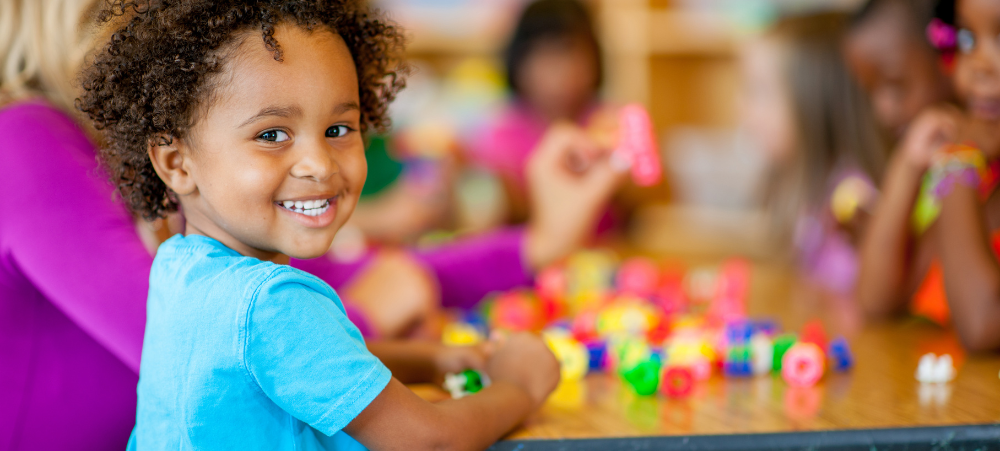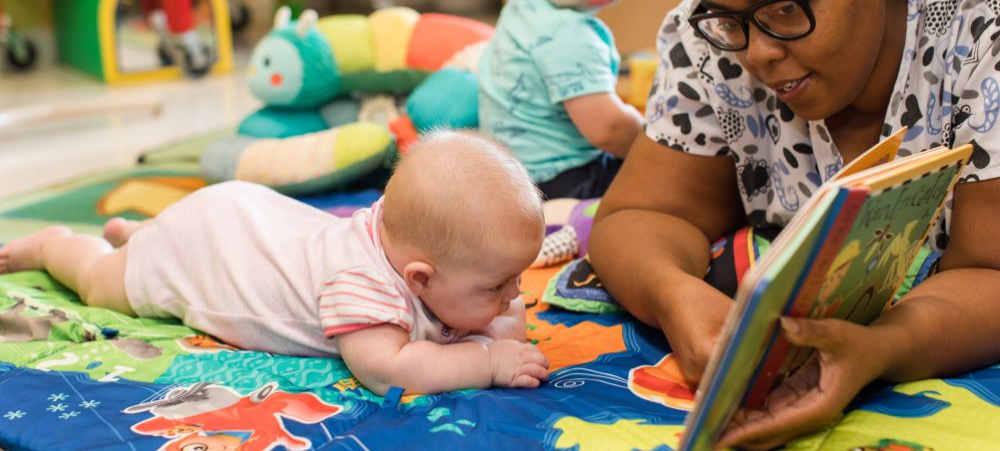From the moment they can see, feel, smell and hear, your baby is learning. What can you do to help the process along and make sure your baby is getting just the right stimulation? Toptots Early Learning offers these wonderful tips.
0-3 months:
At this age babies can’t grab or move toys around so their experience is through sight, touch and sound. Although mobiles will attract your baby’s attention they do get bored looking at the same thing each day, so choose one with interchangeable items or put a mirror where they can see it whilst on their tummy – great for looking at “the other baby” and developing neck muscles. Different rattles with different sounds also help to stimulate hearing, whilst at the same time making baby try and turn sideways to see where the sound’s coming from.
Home-made ideas for the 0 – 3 month old:
Encouraging babies to stay on their tummies isn’t easy but by half filling a 2 litre plastic bottle with water, adding some food colouring, glitter confetti, tinsel or anything brightly coloured and then sealing the lid with nail varnish, you will have a great new toy. This toy will keep baby amused for some time but also be helping to strengthen those neck muscles whilst he is on his tummy.
4-7 months:
They’ve discovered their hands which, when covered with bright socks or a wrist rattle, can be great fun. They need different textures to try and grasp, so use soft toys and squeaker toys making a noise for them to reach for. Hold things in different positions for them, encouraging hand eye coordination and strengthening muscles. And don’t forget the old favourite – blowing bubbles which helps strengthen tiny eye muscles.
Home-made ideas for the 4 – 7 month old:
A helium balloon, filled with some rice and tied onto your baby’s foot not only makes a great noise but will encourage kicking. Please remember that balloons and their strings are a choking hazard, so if the balloon pops, please discard the pieces immediately.
8-12 months:
Now baby is sitting and enjoying toys that he can manipulate. Babies love putting things in and out of containers and finding hidden objects. Cardboard, cloth or vinyl books with different textures make great toys as well for this age group. Who doesn’t remember the joy of a simple ball? Give baby balls of different shapes and sizes, soft and hard, even spiky, then roll the ball back and forth between you – learning to share starts with mum and dad.
Large blocks are also a win as baby knocks down the tower you built, teaching them about cause and effect. Although they may not be able to completely master knob puzzles, they will be able to take the pieces out, which is a great fine motor skill.
Although the thought of musical instruments may sound daunting a xylophone is great for learning different notes and associating them with different keys to develop good listening skills.
Home-made ideas for the 8 – 12 month old:
Give baby half a cup of frozen peas to play with. By picking them up one by one they’ll learn fine motor coordination and to eat by themselves. Become a magician with a cardboard paper towel tube by posting items down one end and to baby’s amazement showing how they come out the other end!
13 months – 2 years:
At this stage they’re up and about, following you around, imitating your movements and looking for things to challenge their manipulatory abilities. They’re starting to talk and understand a lot more than they can say. Reading, maybe even the same story over and over, is a great source of joy for babies at this stage. Reading aloud to children stimulates their interest, their emotional development and their imagination. Remember readers are not born, they are made!
Stacking rings and nesting beakers help dexterity and spatial visualisation, teaching them about size. Push and pull toys, carts with rigid handles to load and unload are great and sorting buckets with basic shapes will teach shape recognition, encouraging hand eye coordination.
This is also the time to encourage imagination. Tea sets for boys and girls, dolls, brooms and mops. Babies don’t know about gender and it’s important not to stereotype them at this age. They see daddy making coffee and want to play with a tea set or dad holding a baby and want to imitate that as well. Boys with sisters get the chance to experiment with dolls but generally we don’t buy dolls for our sons – whereas we wouldn’t think twice about buying a car for our daughter…
Tunnels make wonderful birthday gifts bringing hours of fun to the mobile toddler and wooden blocks, as against plastic interlocking ones, take a lot of manipulation whilst learning to stack them.
Home-made ideas for the 13 – 24 month old:
Using an old formula tin, cut a circular hole in the lid, add some practice golf balls with holes in and you’ve got a shape sorter. Then try squares and triangles, varying the shapes as they get older.
3 – 5 years:
A child of this age is testing his independence, control of language and learning new skills every day. They need to be watched constantly as they have no sense of caution or fear. Dressing up clothes encourages imagination. Paint, play dough, stamping and stickers are great creative hits at this age.
Puzzles, preferably to match their interests, like trucks maybe, will encourage them to build it. Playing and sharing activities is important now so make sure there’s ample play dates. Dolls houses and garages are wonderful gifts amusing them for hours on end. A love of nature, collecting bugs and looking at butterflies and animals can be encouraged with books.
Home-made ideas for the 3 – 5 year old:
Don’t forget to re-enact nursery rhymes like Humpty Dumpty and all the other old favourites. Nursery rhymes are like stories for children – only they are shorter and can be learnt by rote. Nursery rhymes help to bring this genre of reading to a child in a fun and enlightening way.
- My toddler has a short attention span – is he hyperactive? - November 27, 2025
- Routines are they really necessary - November 26, 2025
- Why do I need to stimulate my baby from a young age - November 25, 2025





